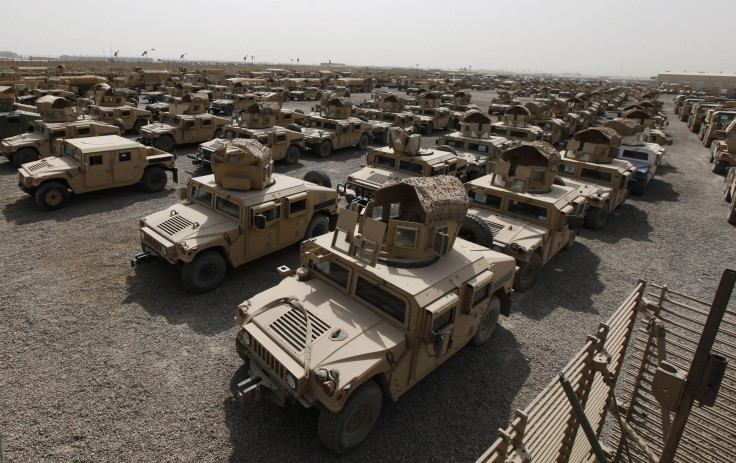The Army Accidentally Dropped Three Humvees From The Sky During A Training Exercise [VIDEO]

U.S. Army officials are investigating an airborne drop that saw three Humvees destroyed after they fell toward the ground during a training exercise in Germany. No one was hurt in the accident, but it likely cost the military more than $600,000.
Soldiers from the 173rd Airborne Brigade in Germany dropped about 150 supply bundles, vehicles, communications equipment and indirect weapons systems hundreds of feet above the earth during an Army exercise on April 11. But three Humvees came free from their rigging as the parachutes deployed, sending the massive vehicles to their demise and kicking up a cloud of smoke.
"The specific malfunctions that occurred on this day are under investigation," Army spokesman Maj. Juan Martinez said in an email to Army Times. "There were multiple rehearsals and inspections of the equipment prior to mission execution. We cannot speculate on what went wrong until the investigation is complete."
More than a million viewers have watched a video of the failed drop since it was posted by U.S. Army W.T.F! moments to Facebook. It shows the vehicles fall from a platform a few seconds after leaving the aircraft.
A witness standing near the camera is heard laughing and yelling "Ooo, Yeah! Yes!" as the vehicles fall. Someone else says, “It’s on fire” and “Hey, do we need to call that up?”
"While [the commanders of the 173rd] are aware of the video, it does not overshadow the hard work of the paratroopers, allies and partners that took place during Saber Junction 16," Martinez said. "[Joint Multinational Training Command] is conducting [an investigation] to identify the person who shot the video. As far as disciplinary actions are concerned, nothing has been decided."
Pictures of the accident were also posted on Twitter. The exercise involved about 5,000 soldiers from 16 allied European partner nations and is held each year with one of the two Army brigades in Europe.
That's a Humvee plunging to Earth from a C-130. Army investigates. RIP Humvee https://t.co/bLrMswDKHz by @kylejahner pic.twitter.com/V7xn3dpSby
— Andrew deGrandpre (@adegrandpre) April 22, 2016
Humvees can cost upward of $200,000. They have been used by the Army since the mid-1980s.
© Copyright IBTimes 2025. All rights reserved.






















